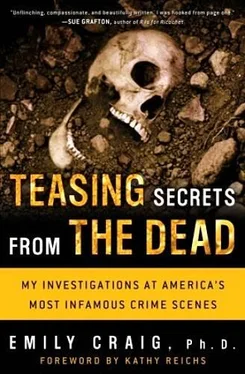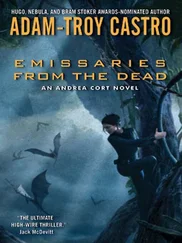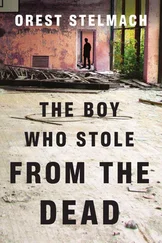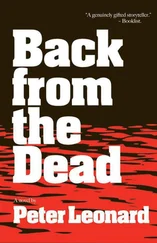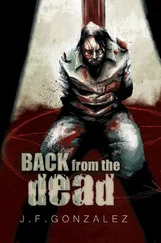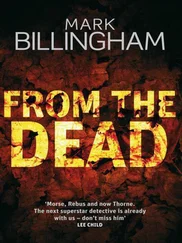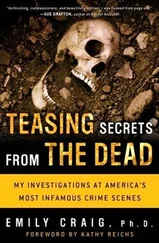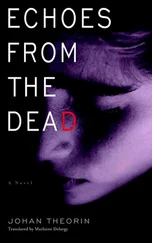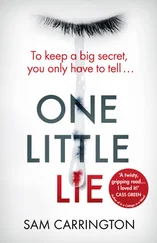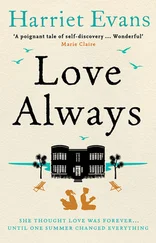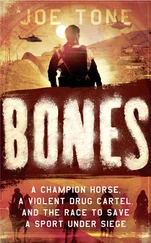Suddenly, I stopped short. One of the pictures had seized my attention with a surprising force. There was no description with the photograph, but as I looked at the young woman-her shy smile, her long black hair-somehow, I just knew . This was the woman we'd been looking for.
The photo had a link to the detailed information that family members had supplied to the website, and I clicked on it immediately. Yes, everything was right-her age, her height, the time since death, her long black hair, even the rose tattooed on her wrist. And, I read eagerly, the young woman's car had been found on the DeSoto Bridge in Memphis -still running-about five hundred miles downstream from where our body was found.
Wait a minute-her car was found downstream ? So her body had floated upstream, hundreds of miles against the Mississippi 's mighty current? It hardly seemed possible. Unless somebody had taken her upstream, of course.
I didn't care. I knew our Jane Doe was Letitia Luna. Now all I had to do was prove it.
I called the Memphis police station, where a helpful detective gave me the name and phone number of Luna's dentist. As I waited for him to fax me her records, I called the detective back and she agreed to get in touch with Luna's family and obtain a detailed description of her tattoo. Then I called Mark LeVaughn and the Carlisle County coroner and offered up my tentative identification.
Back in Memphis, the detective I'd spoken to was searching the station's missing persons chart to see if there was any more information that we could use. She found a note affirming that Letitia had owned a pair of wire-rim glasses which she normally carried in her pocket, just as our Jane Doe had done.
It was now almost nine o'clock on a Friday evening, but with victory so close, I couldn't quit. I arranged for the Memphis detective to contact the family, and that night, Mark, Luna's dentist, Luna's family, and I e-mailed the dental records back and forth, along with pictures of the tattoo and the glasses. By ten a.m. Saturday, we had determined that everything did indeed match. The search for Letitia Luna was over.

I was enormously grateful to have Luna's dental records, because we'd had nothing else to secure a positive ID. The eyeglasses helped corroborate my hunch, but you can never base an ID on personal effects-there are just too many ways that someone might end up with another person's stuff: theft; a simple loan; a murderer's deliberate attempt to throw off suspicion; or the fiery confusion of a plane crash or exploding building, in which not only personal effects but also body parts become commingled.
So what can you use for a positive ID? Well, teeth are always good. As I'd told Marvin, you don't necessarily need the dental records-with a good photo and unusual teeth, you might be able to match the dental work in the photograph with some teeth in an actual skull. Dental records are nice, too, of course, though as I learned in the case of Henry Scharf, even dentists make mistakes.
You might be able to make a positive ID from a tattoo, if it's unusual enough and everything else fits. The rose on Luna's wrist wasn't unique, but both she and Jane Doe were also dark-haired, female, the same height, and missing about the same length of time. In Luna's case, I wouldn't have been willing to rely on the tattoo alone, because so many young women nowadays are tattooed, and small flowers, hearts, and butterflies are so common.
Fingerprints are also nice, though this type of evidence can be more subjective than most people think. You compare fingerprints by a system of points, and if you can't get enough points to match, you may not be able to make a positive ID. Of course, since I deal with bones and decomposed remains, the flesh from their fingertips is usually long gone or so badly decomposed that prints aren't possible.
Surgical hardware is another good basis for a positive ID. Since 1993, doctors have been required to record the individual serial number of many of the pieces of hardware they install in people's bodies, which certainly makes life easier for the folks in my office.
An x-ray might lead to a positive ID, if it reveals a sufficiently unusual body part-an ankle with a healed fracture, say, or a uniquely curved pair of finger bones. Or maybe someone has a strange growth on her elbow-something she never even knew she had-but it shows up on an x-ray in her antemortem medical file somewhere, a perfect match for your remains. Some bones, too, are as unique as fingerprints, such as the frontal sinuses-the air pockets in the forehead bone at the area right between and above the eyes. So if I'm lucky enough to have an antemortem x-ray showing a frontal view of the sinus area, I can compare that to John Doe's skull and get a positive ID out of that.
Of course, the ultimate positive ID is matching DNA. It's almost foolproof and it tends to put all questions to rest. However, it's only used as an absolute last resort. It's not like you can plug your Jane Doe's DNA into some big database-most people's genetic material is not on file. If you have some idea who your victim might be, you can ask his or her family for a matching sample. But if all you've got is dry bones, you have to match mitochondrial DNA. This is an expensive and time-consuming method of identification. As of this writing, mitochondrial DNA extraction and comparison costs an average of five thousand dollars and usually takes weeks or even months.
Sometimes you don't even get to the stage of a positive ID-the best you can do is eliminate a bad choice. My office posts all our unidentified victims on a website, and every two weeks or so I get a call from an investigator somewhere in the country, hoping to match his missing persons report to my John or Jane Doe. We start checking through all the variables: Okay, we can match the height, the weight, the time since death. We might even find evidence of a striking tattoo or a broken arm that healed years ago.
Then he faxes me the dental records-and no dice. Our guy's teeth may be similar, but they're not the same. We cross each other's names off the list and go on to someone else.
For the process to work, of course, you need two kinds of reports on file: missing persons and unidentified remains. When the Luna case was over, I found myself wondering why the Memphis and Kentucky police had never put their reports together.
The answer was simple-though profoundly embarrassing. For some reason, although the Kentucky State Police had circulated details about the case to local news outlets and police posts across the state, they had never entered their information into the NCIC database. So in addition to all the other factors that might make victim identification difficult, we have to add simple human error.
The Luna case also raises an interesting question about where to look for a missing person. Before this case was solved, when you found a body in a river, you tended to look upstream for its source, especially if there was no evidence of foul play. But Luna's body had not been shot or stabbed or strangled-she had obviously died by drowning-and yet her body had come from downstream. Why?
The answer lies in the unique hydrology of the “duck ponds” created between two barges in a tow. The motion of the barges creates eddy currents in these open spaces, sucking up the water and anything else on or slightly below the surface, down to a depth of eighteen inches. Luna's body had somehow gotten caught in a duck-pond eddy and been pulled upstream with the barges. Now, my fellow investigators and I are all going back to other Jane and John Does that have been found in the Ohio River, looking downstream as well as upstream for missing persons reports they might match.
Читать дальше
